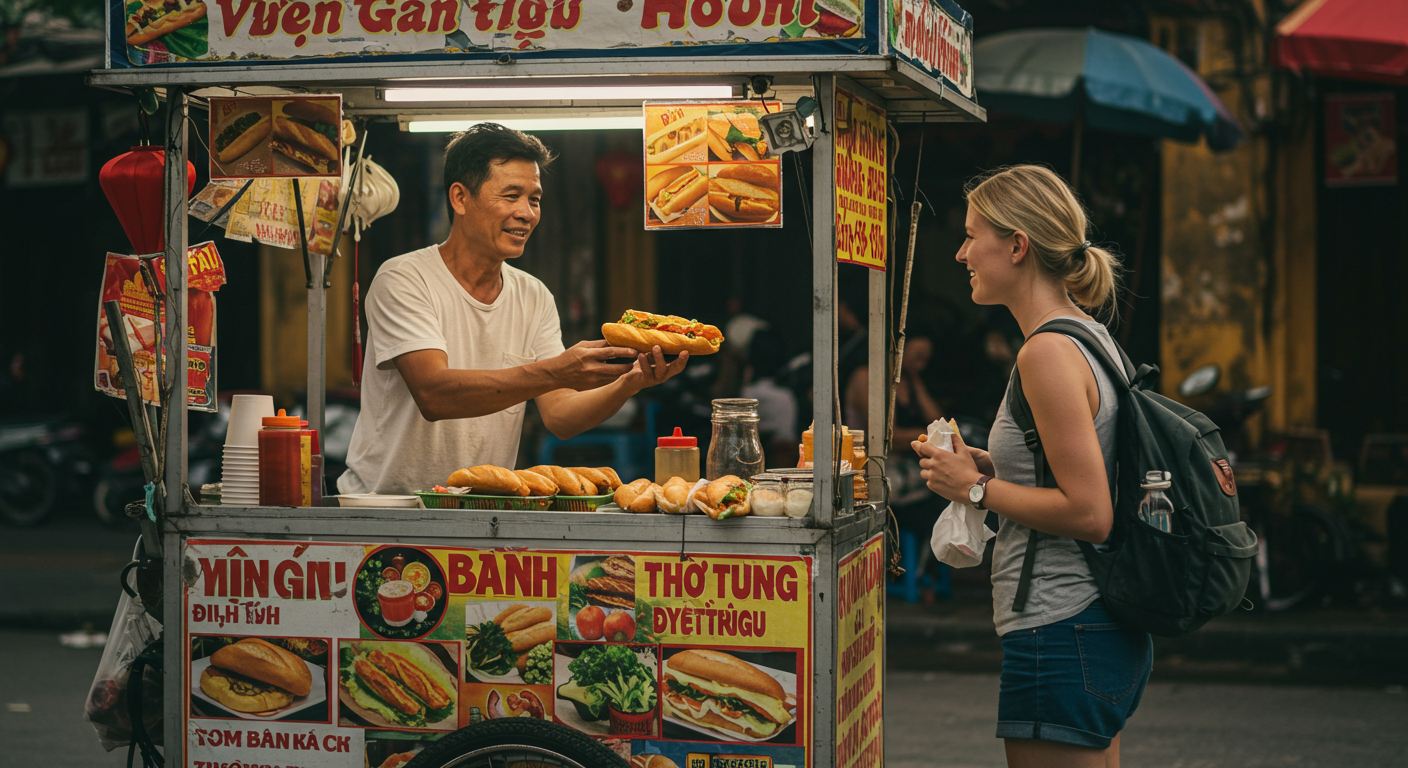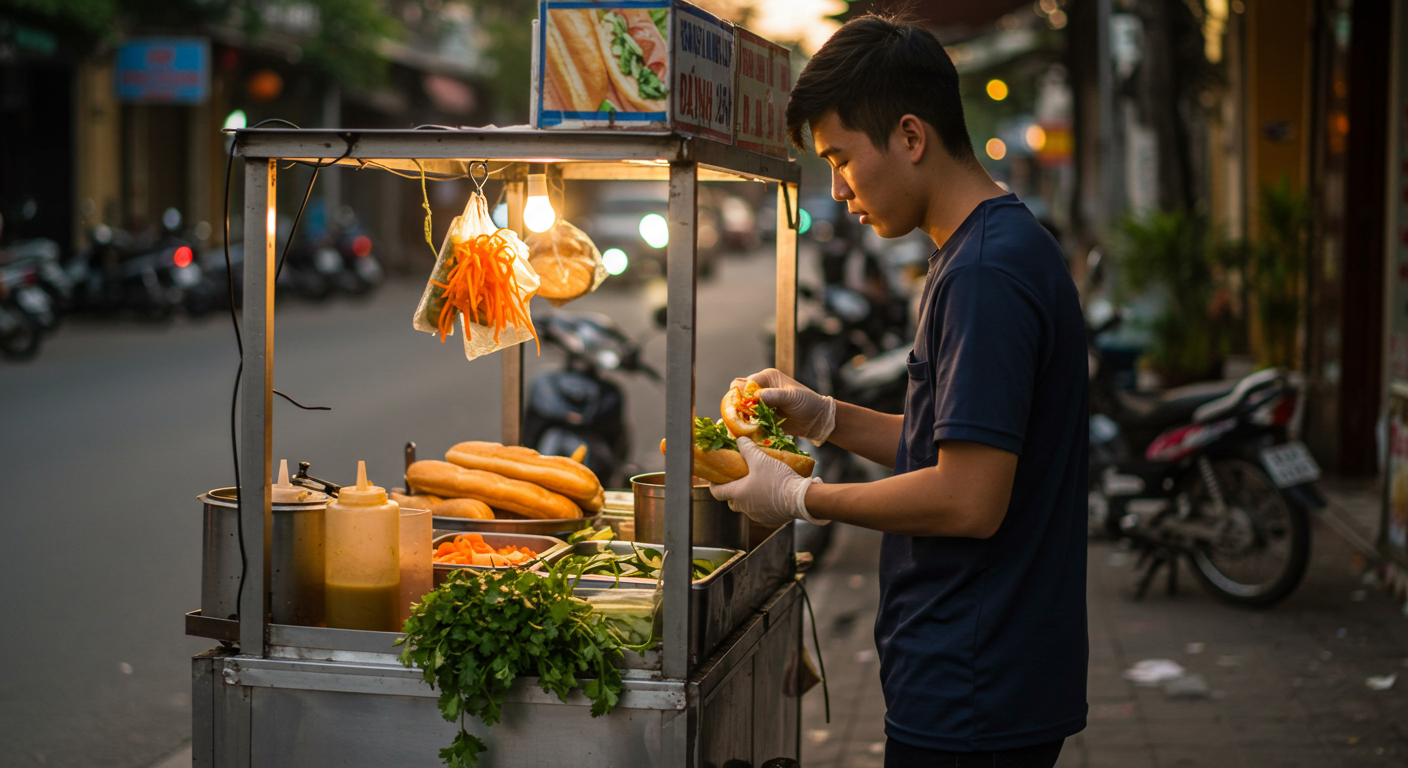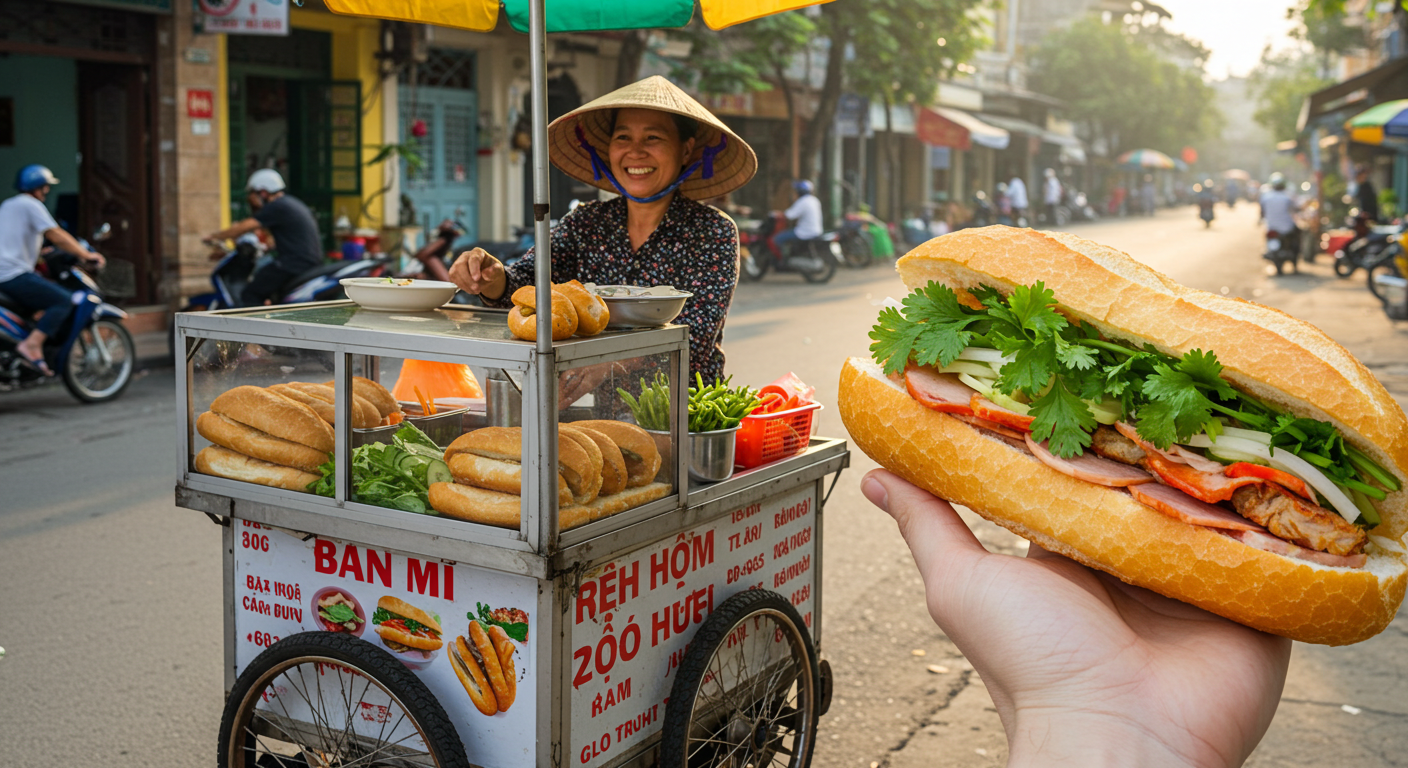
Regional Bánh Mì Variations
Regional Bánh Mì Variations: A North-to-South Journey Through Vietnam's Iconic Sandwich
The bánh mì sandwich stands as one of Vietnam's most beloved culinary exports, a perfect fusion of French colonial influence and Vietnamese ingenuity. While many outside Vietnam might think of bánh mì as a single, uniform creation, locals know that this iconic sandwich transforms dramatically as you travel from the northern provinces down to the southern regions.
Table of Contents
The Birth of Bánh Mì: A Brief History
Bánh mì emerged during the French colonial period (1887-1954) when French baguettes were introduced to Vietnam. The name itself simply means "wheat bread," though today it refers to the entire sandwich. Initially, these sandwiches contained expensive French ingredients like pâté and ham, making them accessible only to the colonial elite and wealthy Vietnamese. After the French departure, Vietnamese vendors adapted the sandwich using local, more affordable ingredients, creating the foundation for today's diverse bánh mì culture. For a deeper dive into this fascinating evolution, check out our article on the history of bánh mì.
Northern Bánh Mì: Hanoi Style
Walking the bustling streets of Hanoi in the early morning, you'll find locals enjoying bánh mì that reflects the northern Vietnamese appreciation for subtlety and restraint. The northern climate produces bread that's denser and chewier with a thicker crust compared to southern varieties.
Northern bánh mì embraces simplicity. Rather than an abundance of ingredients, northern vendors focus on quality and balance. A typical Hanoi bánh mì contains thin slices of Vietnamese ham (chả lụa), a spread of pork liver pâté, and sometimes pork floss (ruốc). You won't find the diverse cold cuts that characterize southern versions. To learn more about these traditional ingredients, read our guide to essential bánh mì fillings.
The vegetable components are equally restrained – cucumber slices and modest amounts of pickled vegetables create texture without overwhelming the sandwich. Northern palates generally prefer less herbaceous and spicy flavors, so cilantro appears in moderation, and chili peppers are often optional or absent altogether.
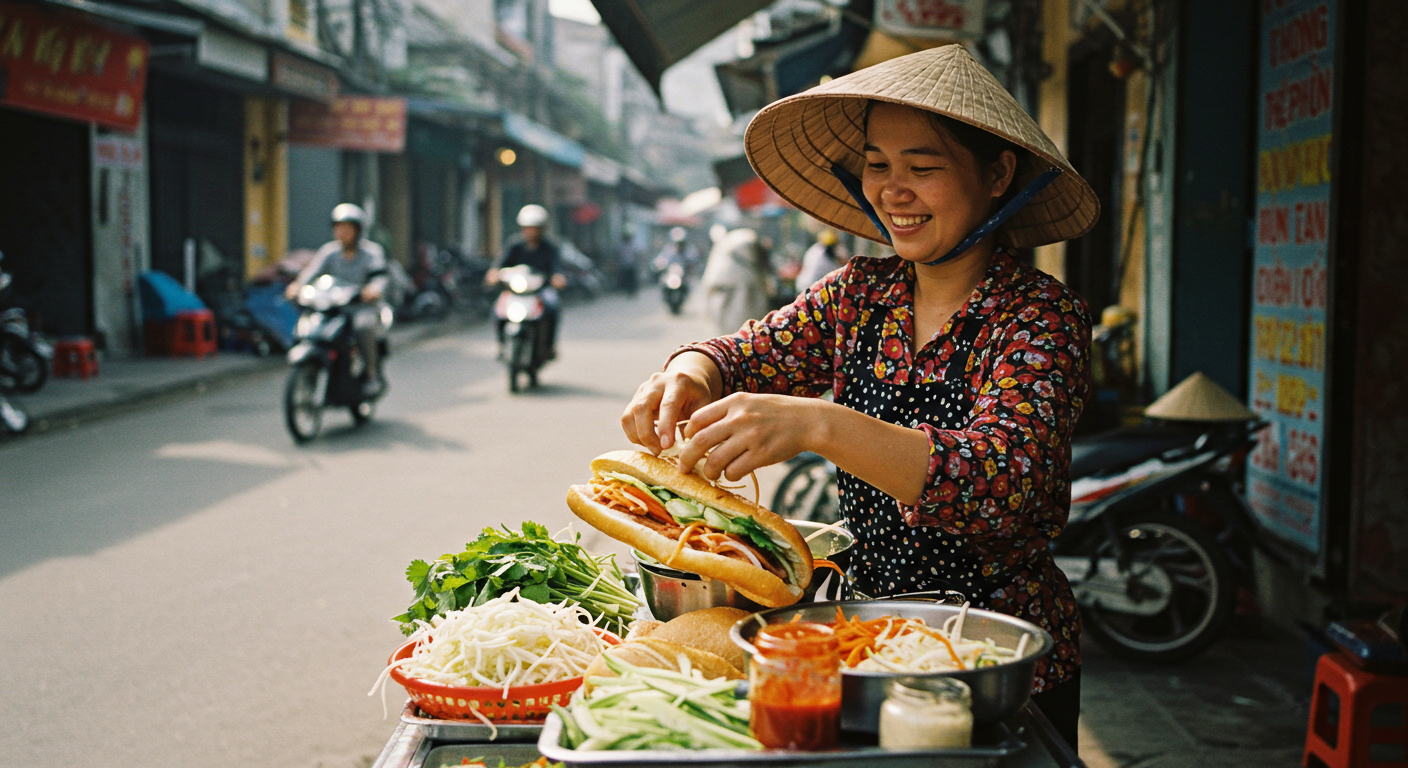
When it comes to sauces, northern bánh mì keeps it minimal – perhaps just pâté spread and a light brushing of butter. The preparation philosophy focuses on allowing each ingredient to shine rather than competing for attention.
Popular northern varieties include the classic Bánh Mì Pâté Chả with pâté and Vietnamese ham, Bánh Mì Trứng featuring a fried egg (a popular breakfast choice), and Bánh Mì Cá, which showcases the importance of seafood in northern cuisine.
Central Vietnam Bánh Mì: The Flavorful Middle
Central Vietnam – home to the imperial city of Huế and the ancient trading port of Hoi An – offers bánh mì that bridges northern and southern styles while adding distinctive regional touches. The bread here strikes a balance: not too dense but not as airy as southern loaves, influenced by the region's unique climate.
What truly distinguishes central Vietnamese bánh mì is its remarkable protein variety. In Hoi An, you might find xa xíu (char siu-style roasted pork) tucked into your sandwich, while coastal areas feature delicate fish cakes. Throughout the region, nem nướng (grilled pork patties) and thịt nướng (grilled pork slices) are popular protein options that showcase the region's talent for grilling.
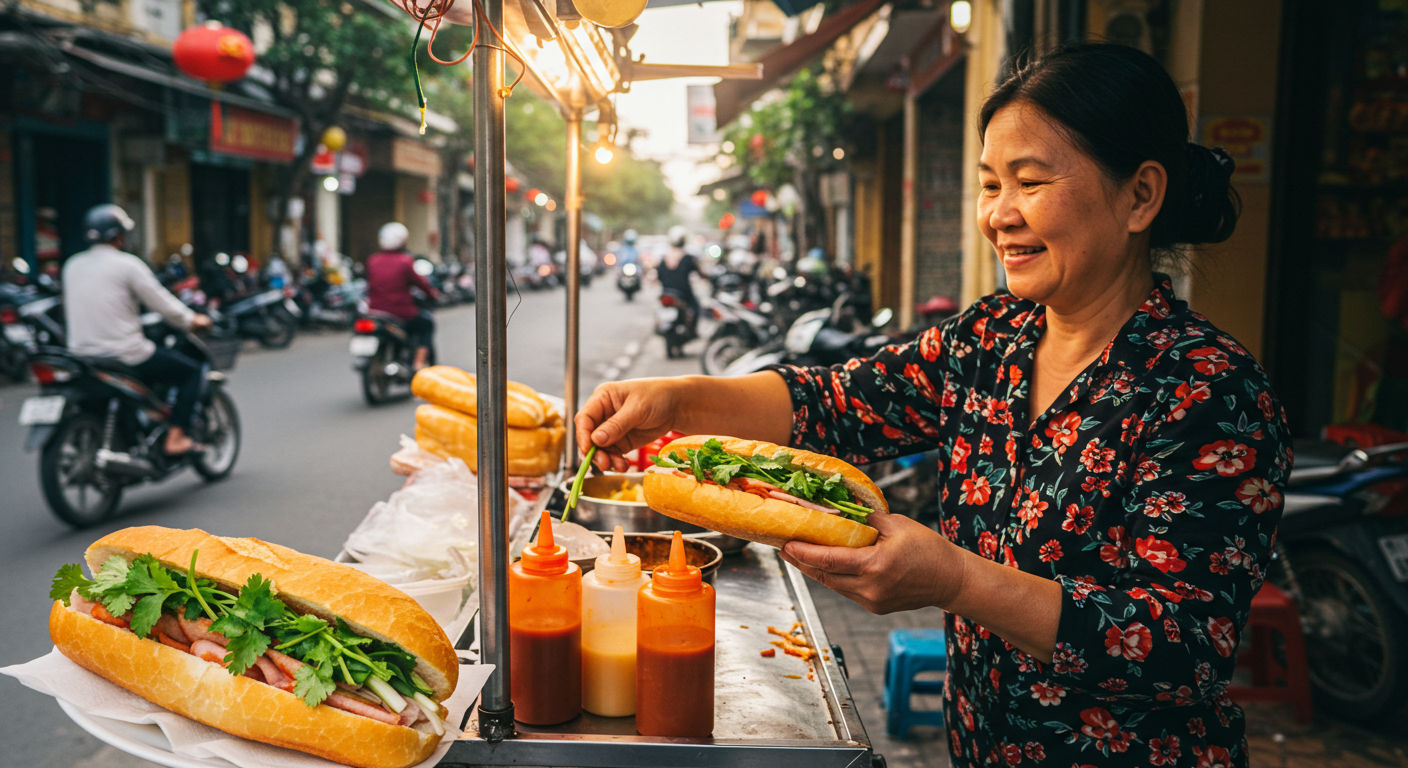
Central Vietnam's love of herbs becomes evident in their bánh mì, which features a more generous herb selection than northern varieties. The region's appreciation for spice also appears in the form of more liberal chili usage – especially in Huế, a city renowned for its spicy cuisine. These herbs and spices are among the most important bánh mì toppings that give each regional variation its distinctive character.
Perhaps most notably, central Vietnamese bánh mì often features distinctive local sauces. Hoi An's internationally acclaimed bánh mì shops like Madam Khanh (the "Bánh Mì Queen") and Bánh Mì Phượng prepare secret special sauces – sweet-savory blends that have earned them worldwide recognition. In Huế, spicy sauces incorporating local chilis give the sandwiches their renowned kick.
Southern Bánh Mì: Saigon Style
In Ho Chi Minh City (formerly Saigon), bánh mì reaches its most extravagant expression. The southern climate produces bread that's lighter and airier with a thin, shattering crust – the result of faster fermentation in the hot, humid environment. This bread often carries a slightly sweeter note than northern varieties.
Southern bánh mì celebrates abundance. Step up to a sidewalk stand in District 1, and you'll be offered sandwiches bursting with ingredients. The classic Bánh Mì Đặc Biệt (special combo) might contain five or six varieties of cold cuts alongside chả lụa (Vietnamese pork sausage), thịt nướng (grilled pork), bì (shredded pork skin), and more.
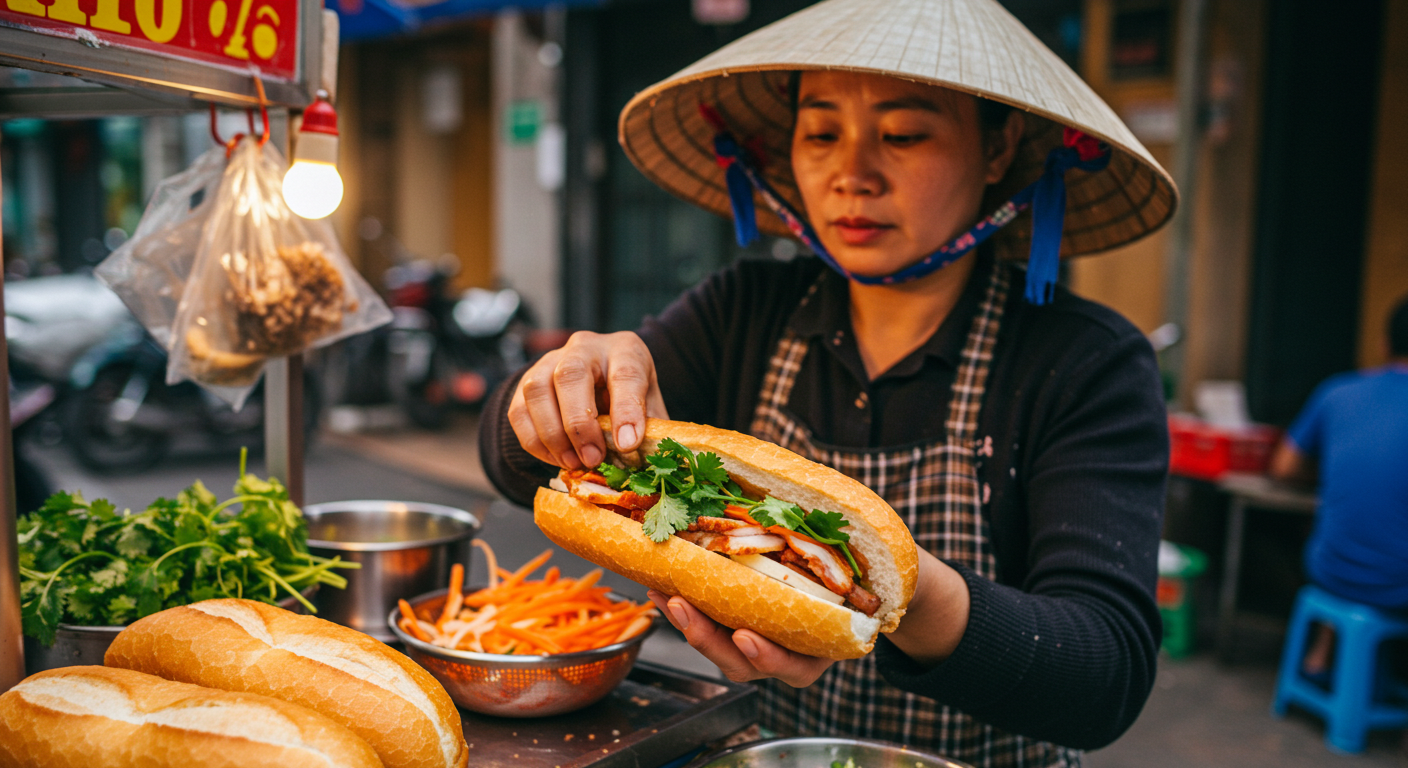
The vegetable components are equally generous – bright cilantro, mint, and Vietnamese coriander share space with cucumber, jalapeños, bean sprouts, and vibrant pickled carrots and daikon. These fresh elements provide crucial balance to the rich proteins. Despite the abundance of ingredients, southern bánh mì remains remarkably affordable, as detailed in our bánh mì price guide.
Southern vendors aren't shy with sauces either. House-made mayonnaise, Maggi sauce, spicy chili paste, and scallion oil might all make an appearance. The preparation philosophy celebrates vibrant flavors and textural contrasts rather than minimalism.
Beyond the classic Đặc Biệt, southern Vietnam offers creative variations like Bánh Mì Xíu Mại with tomato-braised pork meatballs and Bánh Mì Chảo – a deconstructed version served sizzling in a small pan with bread on the side for dipping.
Sweet Variations and Modern Evolutions
Across Vietnam, sweet bánh mì variations offer delightful alternatives to savory versions. In the north, you might find bánh mì cay with condensed milk and butter. Central regions offer bánh mì kem (ice cream sandwiches), while the south creates coconut ice cream sandwiches and fruit-filled dessert variations.
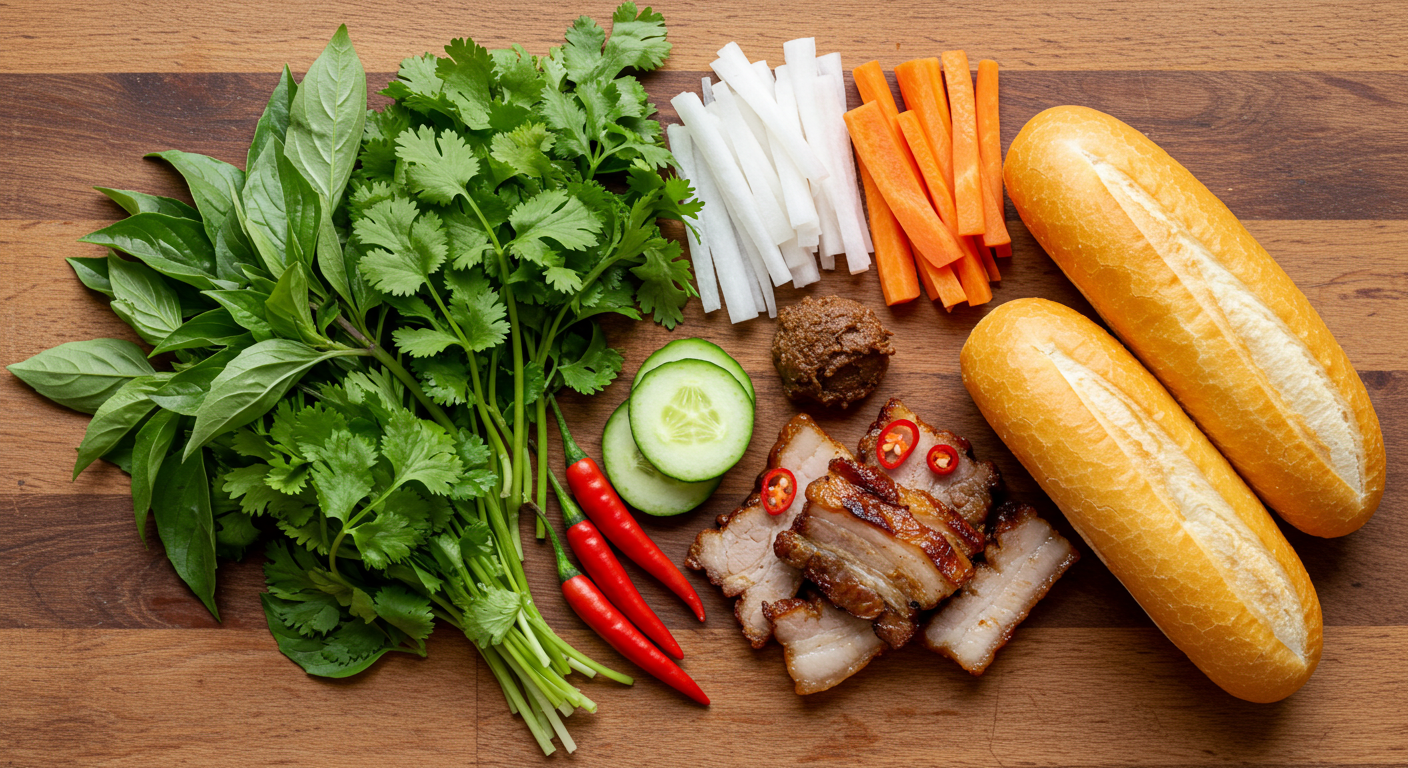
Today's bánh mì continues to evolve, with modern Vietnamese chefs experimenting with new ingredients while respecting regional traditions. From plant-based versions in health-conscious cafés to fusion interpretations incorporating Korean, Japanese, or even Mexican flavors, bánh mì remains a canvas for culinary creativity while maintaining its distinct Vietnamese identity.
The Bánh Mì Journey
What makes bánh mì truly special is how it reflects Vietnam's geography and cultural diversity in a single food item. From the restrained elegance of a Hanoi bánh mì to the flavor-packed explosion of a Saigon style sandwich, these regional variations tell the story of a country's history, colonial influence, and incredible culinary adaptability.
The next time you bite into a bánh mì, consider which regional style it most closely resembles – and perhaps plan a journey to experience all three traditions in their authentic settings. There's no better way to understand Vietnam than through its most beloved sandwich.

